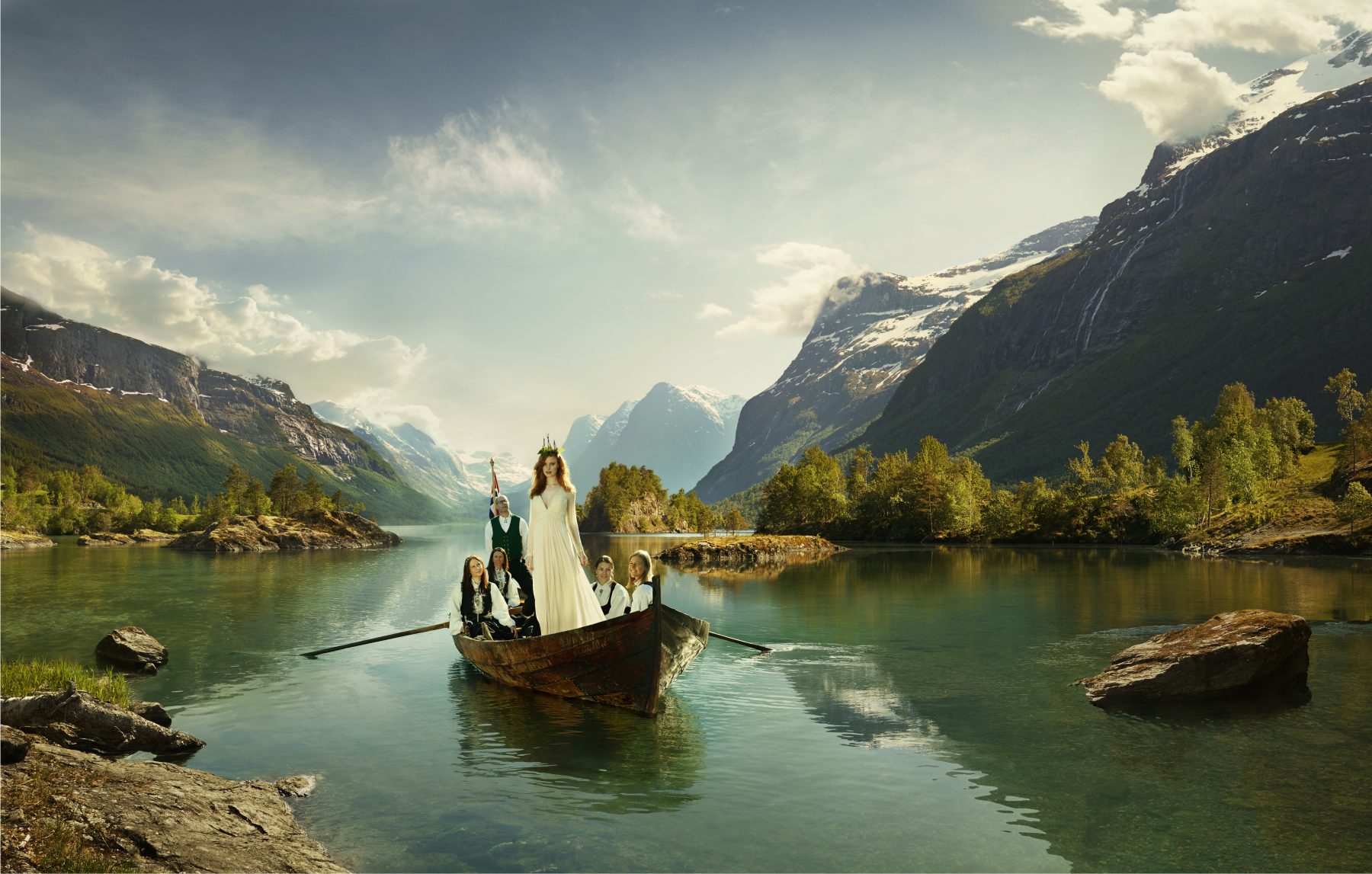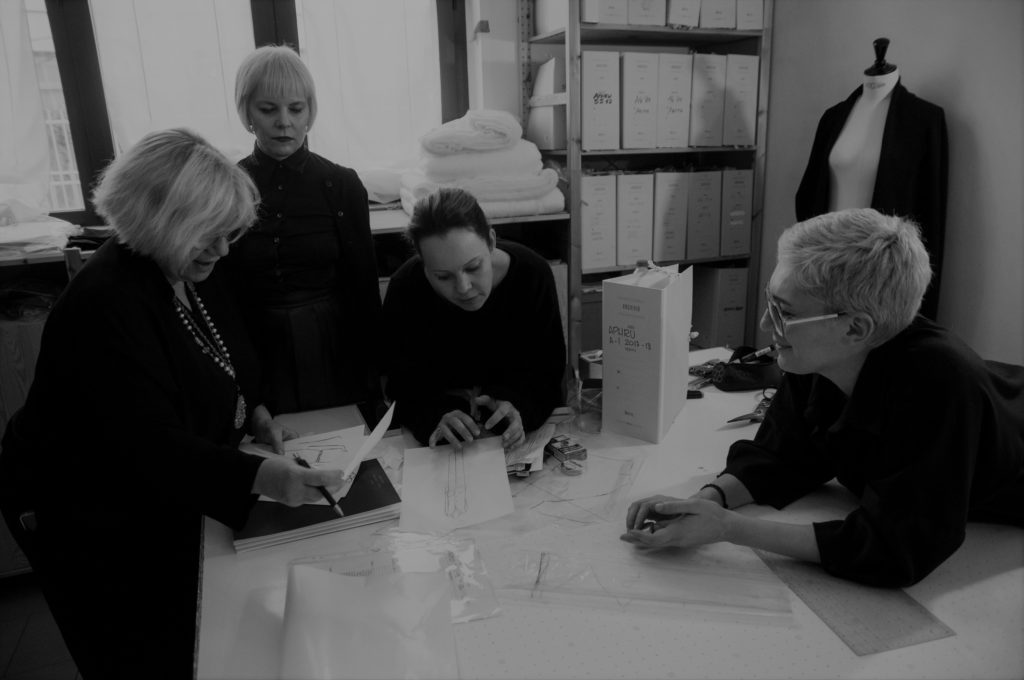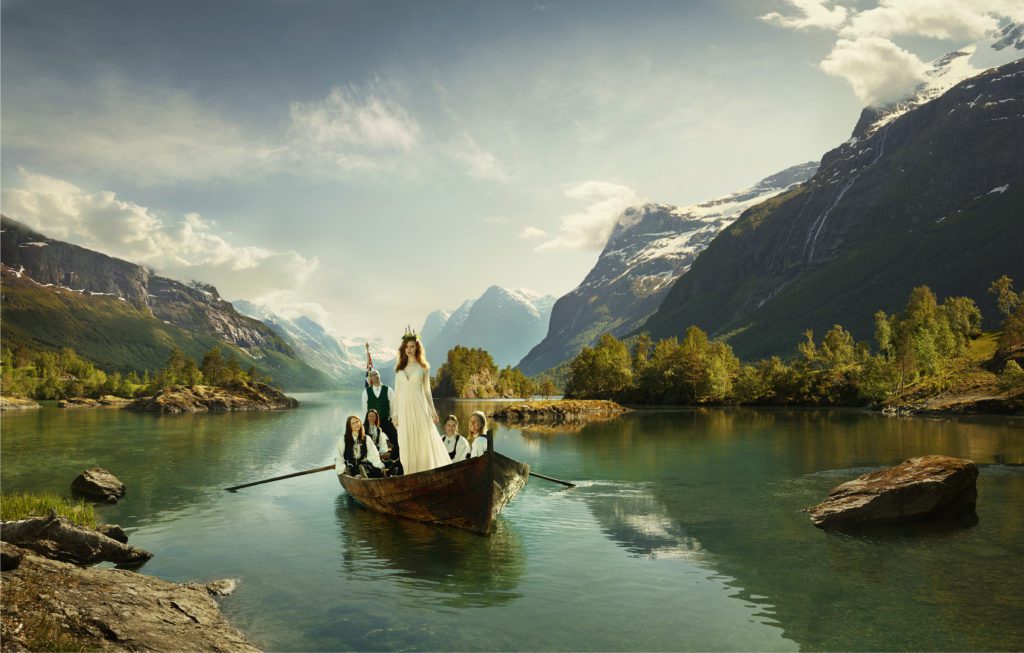Since the early 1600s to the present day, fashion and nature have shared an intertwined, but tricky, relationship together. We explore the forward-thinking fashion brands at the helm of Norway and the Nordic countries’ ethical debate.
“We won’t go naked. People will always need clothes. But we might run out of resources to make them”. Project manager at Norwegian Fashion Hub, Elin Kathrine Saunes is trying to unpick the global – and rather complicated – subject of sustainability in fashion. From the more primitive structures of an umbrella created from the upper jaw of filter-feeding whales to the 8,183 litres of water required to grow enough cotton to make one pair of jeans, fashion relies heavily on Mother Earth. But what happens when this partnerships turns sour and become more destructive than co-dependent?
There are countless contemporary issues that can challenge a brand when it comes to sustainability. It could be their water usage – a common factor for cotton cultivation, textile dyeing and finishing – or their waste handling. “Many fashion brands will sit on stock and burn the excess”, Saunes continues to explain. Alongside consumption and waste, there’s the well-documented issue of modern day slavery. Wages are low and so is awareness of the reality. The consumer is notoriously fickle and whilst they might read a Guardian article about cheap Indian labour, they’re happy to take the right rose-tinted mutterings of ethical accountability and run with it. Sadly, sustainability is still more of a hygiene factor for big brands and without national treasure David Attenborough preaching for the cause, it’s sometimes easy for us to cut out the stark realities.
“It is more difficult to turn around an elephant than a small animal. Younger fashion brands and nations should see this as an opportunity to excel.”
– Anita Godell, founder of Norwegian brand APHRU
But Norway is in a good position when it comes to building a more sustainable future. Firstly, there’s the accessibility to nature’s elements. Hype has built for the Nordic islands knitwear recently – with a little help from Danish TV series The Killing, Sarah Lund and that sweater – and yearly Norway processes around 4.000 tonnes of wool. Whilst the handicraft of knitting yarn dates back to the 19th century in Norway, Head of Innovation at Norwegian Fashion Hub, Gisle Mariani believes the country’s more fresh-faced entry into the fashion world also positions it in good stead for adopting new processes and initiatives. “The major clothing companies are so stuck in their pattern that they cannot easily change their business models, Norway is a relatively young fashion nation”. Anita Godell, founder of APHRU – a Norwegian brand established in 2014 with integrity and honesty at the core of its clothing – definitely sees this as a huge moment to showcase Norway’s nimble nature. “It is more difficult to turn around an elephant than a small animal. Younger fashion brands and nations should see this as an opportunity to excel”.
Excellence is certainly the driver for Greater Than A – a line founded by Olympic Gold medal winner, Aksel Lund Svindal who admits it would’ve been easy to plaster his name over a reasonably good collection and sell a bunch of threads online. But Svindal doesn’t settle for reasonably good and the team at Greater Than A are adamant that “the last thing the world needs right now is another fashion brand”. Instead, this fledgling fashion brand, which launched at the end of 2017, finds itself joining the growing movement of designers and brands offering conscious consumers better and more sustainable choices for their wardrobe. After all, who says you can’t live a sustainable lifestyle and be stylish at the same time?
Research projects have sprung into action with the collective mission to work towards a world beyond next season. Funded by the Swedish Government, Mistra Future Fashion looks to address the key stages in a product’s lifecycle whilst Danish not-for-profit organisation, Global Fashion Agenda is on a mission to “make sustainability fashionable, guiding and supporting industry leaders in changing the way we produce”. These groups are part of a collective bid to design for longevity instead of short-term use and encourage the adoption of recyclable materials, something leading Scandinavian fashion brand Filippa K know all too. Drawing on cutting-edge research by Mistra Future Fashion, the team are incorporating circularity into its latest collections. Sustainability Director at Filippa K, Elin Larsson unsurprisingly has firm views on the subject. “The industry needs to transform”, she explains vehemently in the brand’s video detailing the brand’s exploration into the “speeds” of textile materials. “We need passion, patience, and courage”.
It’s not all new-wave thinking and a milennial driven call-to-arms though. For some this transformation has been set in motion since the late-nineties. The brand, Leila Hafzi came to Stavanger, Norway in 1997 with a mission to establish an environmentally friendly production model through her couture wedding gowns (just follow #EcoWedding to get an idea). It’s true that before the turn of the millennia, few fashion brands talked about globalisation or eco-conscious production from a developing country but entrepreneur was one of many designers who Hafzi inspired the fashion industry into a global shift. But not everyone is comfortable being the lightning rod of a movement. For many, only a sense of added accountability amongst fashion peers will make this a reality.
In June of last year, thirteen leading textile brands made headlines signing the sustainable cotton pledge. Scandinavian heavyweights Lindex, IKEA and H&M alongside brands closer to home such as Marks and Spencers and ASOS all pledged that 100 percent of the cotton they use will come from sustainable sources by 2025. The initiative aims to help with the long-term sustainability within the cotton sector as a whole, as well as to help the industry’s environmental impact. On a smaller but no less impressive scale, Godell’s APHRU brand launched its own collaborative campaign earlier this year alongside World Wildlife Fund Norway (WWF) to raise awareness of endangered species. As the originator and entrepreneur explains: “I wanted to do a design collaboration with someone who does not use sustainability and ‘green’ only as a buzzword”.
“Could it be that instead of trying to solve nature and fashion, the solution is within the fledgling relationship between science and fashion?”
But whilst a large number of clothing brands are making huge strides towards more eco-friendly systems and processes, it’s hard not to hear the ‘sustainability’ label bandied about as a buzzword. “I see quite a few brands and blogging collaborations adding a little ‘dash’ of sustainability on top”, Godell admits. “It doesn’t give much credibility if in one picture you market a shirt in an organic material and then on the next picture you try to influence young girls to buy a jacket made from acrylic”. And it’s this fine balance between the hygiene approach and the holistic approach that separates the real change-makers from the crowd. If you were to ask most brands today, they would attest that they believe it’s important to tilt their business around more sustainable solutions. But much like this generation’s Instagram induced sociopolitics, there’s quite a wide berth between clicktivism and activism.
When it comes to fashion, sustainability needs to last beyond the next season. With poster-campaigns like Aphru and long-standing changemakers like Leila Hafzi providing ethical alternatives to staple materials, could it be that instead of trying to solve nature and fashion, the solution is within the fledgling relationship between science and fashion? Much like Godell at APRHU, we’re all committed to conservation. But what if the way to conserve our present was more about embracing the future? By bringing together a collective commitment and transformative technology, the future looks less wooly. We just need Sarah Lund on board to warm the mass markets…
Top photo:
More from Norwegian Arts:



